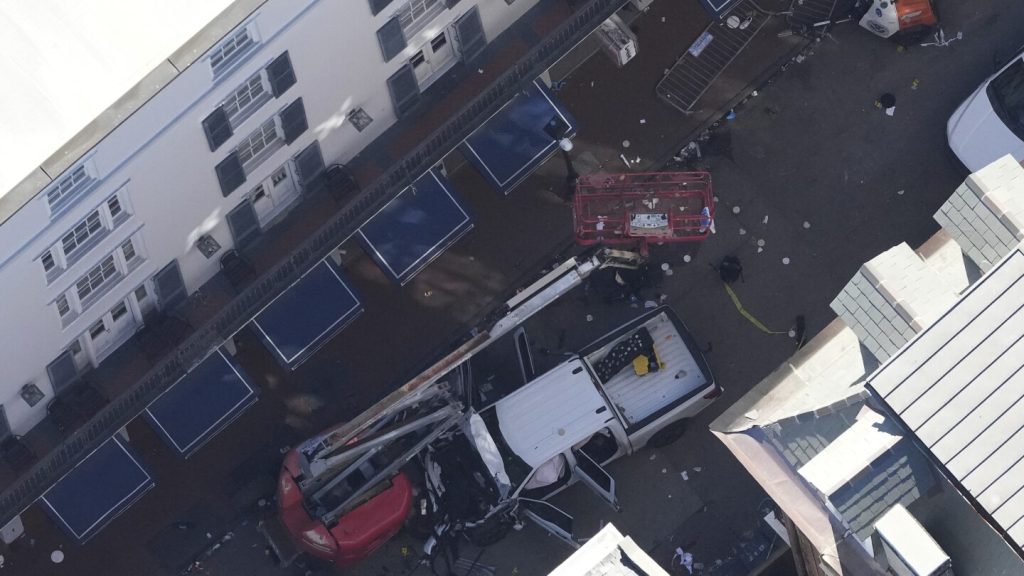On New Year’s Day in New Orleans’ French Quarter district, a pickup truck driver plowed through a crowd of pedestrians, killing at least 15 people and injuring around 30 others. The suspect was killed in a shootout with the police. The FBI is treating the incident as an act of terrorism and believes that the driver did not act alone. The attack occurred during the celebrations for the new year on Bourbon Street, a popular destination for festivities. The College Football Playoff quarterfinal at the Sugar Bowl was postponed to Thursday following the tragedy.
The driver identified as 42-year-old Shamsud-Din Bahar Jabbar, a U.S. citizen and Army veteran from Texas. An Islamic State group flag was found on the vehicle’s trailer hitch, leading the FBI to investigate any possible connections to terrorist organizations. Alethea Duncan, an FBI official, stated that Jabbar likely had accomplices in this attack. Jabbar had a military background, serving in Afghanistan and later in the U.S. Army Reserve until 2020. Court records revealed financial difficulties in his personal life prior to the incident.
Authorities discovered guns and pipe bombs inside the suspect’s vehicle during their investigation. These devices were concealed within coolers and wired for remote detonation using a remote control found in the vehicle. The incident took place amidst a crowd of New Year’s revelers on Bourbon Street as well as in anticipation of the Sugar Bowl game between Georgia and Notre Dame. New Orleans had been undergoing a project to replace bollards along Bourbon Street, designed to prevent vehicle attacks, prior to this incident.
The use of vehicles as weapons in acts of mass violence is becoming a concerning trend for law enforcement officials. These attacks are challenging to prevent and can result in significant casualties, as seen in the New Orleans incident and previous attacks such as the one in Magdeburg, Germany. Authorities continue to investigate the motives behind the New Orleans attack and any potential connections to terrorist organizations or other individuals involved in the planning. The tragic event has led to heightened security measures and a sense of unease among residents and visitors in the city.
The FBI’s investigation into the New Orleans attack is ongoing, with efforts to uncover any further details about the driver’s background, motivations, and potential accomplices. The incident has raised concerns about the vulnerability of crowded public spaces to vehicular attacks and the challenges in preventing such tragedies. The community has come together to mourn the lives lost and support those injured in the attack, while also seeking answers and justice for the victims. The aftermath of the attack has prompted discussions about security measures and preparedness in densely populated areas, as well as the need for vigilance and coordination among law enforcement agencies to prevent similar incidents in the future.
As the city of New Orleans grapples with the aftermath of the tragic attack, residents and visitors are mourning the lives lost and coming together to support one another. The incident has highlighted the ongoing threat of terrorism and the challenges in securing public spaces against vehicular attacks. The FBI’s investigation into the driver’s background and any possible terrorist connections is crucial for understanding the motives behind the attack and preventing similar incidents in the future. Amidst the shock and grief, the community is showing resilience and solidarity, determined to recover and rebuild in the wake of this devastating event.


